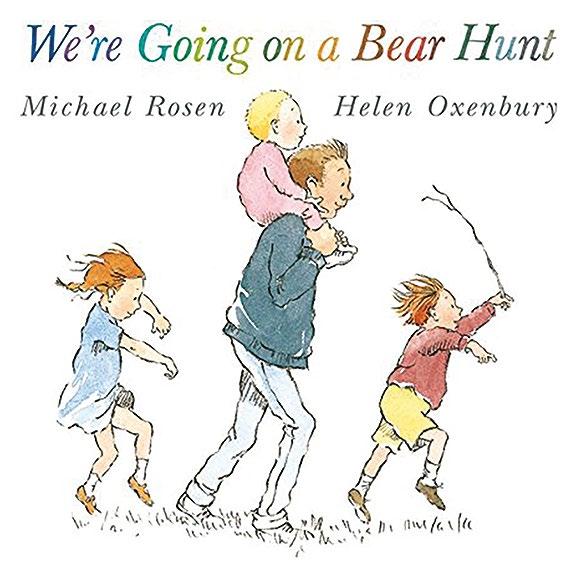
6 minute read
THE BLOCK MODEL
PROGRAM COMPREHENSION AND THE BLOCK MODEL
Understanding programs before we write them is vital, and the Block Model can help to foster program comprehension
Advertisement
As the name suggests, program comprehension concerns understanding programs and includes not only understanding the program as written, but how the program works, and its purpose. In recent years, program comprehension has been recognised as an important part of learning to program. It is something that can be easily missed, as learners dive straight into writing programs before they have learnt to read them. So, what exactly is program comprehension, why is it so important, and how can educators develop these skills with their learners?
The challenges of programming
Although programming is a valuable and rewarding skill to learn, many learners find the process challenging: ■ Even simple programs are rich in concepts that can cause cognitive overload in learners ■ Learners may rush to write programs too soon, before they have read and understood the relevant concepts ■ Programs often don’t work first time, demanding resilience and persistence ■ Learners need to switch between different abstractions, the problem, the program text, and its execution,
constantly moving from single lines to the program as a whole ■ Learners also need a mental model (a notional machine) for how the computer works and will execute the program
These challenges do not mean that programming is intrinsically difficult, and recognising them can help educators identify where they can support their learners.
Program comprehension
Experienced programmers demonstrate a high degree of program comprehension. As well as having a robust notional machine, they can develop programming ‘plans’ (chunks of code that perform a specific task), based on common features in programs that they have seen. They can then use these plans or patterns to interpret, explain, adapt, debug, and create programs.
Novice programmers know of very few programming plans, and have limited awareness of how programs are executed. Their focus may be limited to decoding individual words in a program, rather than comprehending their meaning, or the meaning of the wider program. We must understand how to bridge this gap.
Program comprehension tasks
There are many great examples of activities that promote program comprehension, including code tracing, Parson’s Problems, PRIMM, and tasks in which learners ‘explain the purpose’. A teacher-focused study1 identified more than 60 different activities that could support learners in developing program comprehension skills. It also highlighted that many of these activities
were already used to assess program comprehension, rather than support its development. As program comprehension is broad and there are many activities available, it can be difficult to know which activities to use in which circumstances.
The Block Model
One tool for understanding and categorising aspects of program comprehension is the Block Model2, which consists of twelve areas of comprehension where four levels and three dimensions interact. The framework defines four distinct levels at which the learner may focus on a program:
■ Atoms, the smallest elements, are the keywords, symbols, and syntax, or a single line of code ■ Blocks are small chunks of code that perform a task — for example, single lines, loops, or selection statements ■ Relationships are the connections between blocks, and the manner in which they work together, such as function calls and return values ■ Macro structure refers to the program as a whole
The framework also considers the ‘dimension’ of the program, or how the learner is viewing it:
■ The program exists as a static piece of text. This dimension is the ‘text surface’ and is where learners need to consider the program’s grammar and syntax. ■ When the program is executed, it becomes a dynamic object that may behave differently depending on its inputs. This dimension is known as the
‘program execution’. ■ The ‘function’ dimension is where learners consider the intended purpose of the code, whether that be an individual atom, block, or full program.
The Block Model therefore comprises twelve areas of program comprehension that learners should be able to move between as they develop their understanding. The related ‘holey quilt’ theory3 suggests that learners begin with varying levels of knowledge in each zone, ranging from fragile to deep. Knowledge is deepened and supported over time by learning activities targeting each zone.
Mapping tasks to the Block Model
It is important to devise activities that develop comprehension in each of these zones. By considering each dimension in turn, we can identify tasks that may foster comprehension at each level of focus.
Comprehending the text surface can be tricky, as learners need to discern the meaning of the program from text with unfamiliar terms, structures, and syntax. Without support, they may get stuck focusing on the program at the level of atoms. A simple strategy is to identify aspects of the code within the text. By identifying examples of variables, conditions, functions, and so on, educators can help learners make sense of the text, and connect it to underlying concepts.
When considering program execution, several approaches could be used to help develop understanding. Learners could trace simple programs, determining the end state of variables or the inputs required to reach a specific state. They could complete Parson’s Problems, which transcend the text surface and enable learners to focus on the correct sequence of instructions for a specified goal. Similarly, they could investigate the effect of swapping two lines of code, or try to find lines that can never run.
Learners can also benefit from exploring function. Asking learners to explain the function of a line, snippet, or entire program is a great place to start. They will have to use clues within the text and observe the execution. Educators can vary the degree of challenge by the clues they leave in the programs. Educators can also connect function back to text by asking learners to provide meaningful names for variables, functions, or entire programs. Alternatively, learners could be given a description of the purpose and identify a program that matches, or compare multiple programs to find which are functionally equivalent.
There are many options to choose from, but the most important step is to review our own practice, to find and fill those gaps in learners’ program comprehension.
SUMMARY
Programming has several challenges:
■ It is concept-rich, leading to cognitive overload ■ It balances comprehension with coding experience ■ It demands persistence and resilience ■ Learners need a secure mental model of computation
Program comprehension:
■ Allows learners to interpret, explain, adapt, debug, and create programs ■ Supports learners to develop programming patterns or plans ■ Can be divided into twelve zones using the
Block Model ■ Learners should develop knowledge in each zone and be able to move between them
Comprehension tasks:
■ Educators can use the Block Model framework to categorise tasks and identify gaps where students need support ■ A range of strategies already exist that have been mapped to the Block Model
REFERENCES
1 Izu, C. et al. (2019). Program Comprehension: Identifying Learning Trajectories for Novice Programmers. ITiCSE ’19: Proceedings of the 2019 ACM Conference on Innovation and Technology in Computer Science Education. New York, ACM. 261–262. helloworld.cc/comprehension1 2 Schulte, C. et al. (2010). An introduction to program comprehension for computer science educators. In Clear, A. & Russell Dag, L. (eds.) ITiCSE-WGR ’10: Proceedings of the 2010 ITiCSE working group reports. New York, ACM (pp. 65–86).
helloworld.cc/comprehension2
3 Clear, T. (2012). The hermeneutics of program comprehension: a ‘holey quilt’ theory. ACM Inroads. 3(2), 6–7. helloworld.cc/comprehension3










